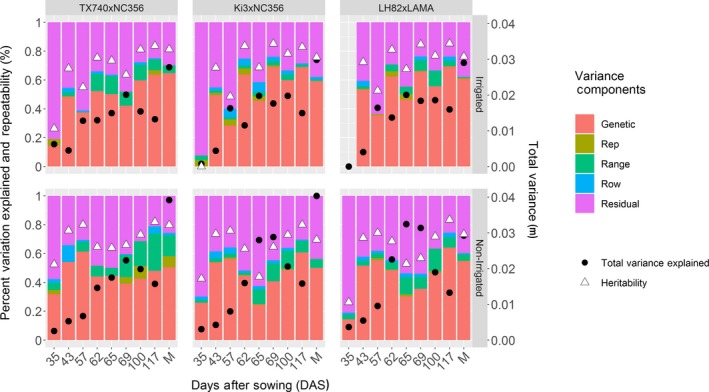Genomic alterations in thymoma-molecular pathogenesis?
Thymomas and thymic carcinomas (TCs) are neoplasms of thymic epithelial cells. Thymomas exhibit a low mutational burden and some recurrently mutated genes. Probably the most frequent missense mutation p.(Leu404His) impacts the final transcription issue IIi (GTF2I) and is restricted for thymic epithelial tumors (TETs). The clinically indolent varieties A and AB thymomas categorical the miRNA cluster C19MC. This miRNA cluster recognized to be the biggest within the human genome, is-with expression in any other case restricted largely to embryonal tissue-silenced within the extra aggressive kind B thymomas and TCs.
Thymomas related to the autoimmune illness myasthenia gravis (MG) exhibit extra frequent gene copy quantity modifications and an elevated expression of proteins homologous to molecules which are targets for autoantibodies. TCs, nonetheless, show the next mutational burden, with frequent mutations of TP53 and epigenetic regulatory genes and lack of CDKN2A. The information of molecular alterations in TETs fosters the understanding of their pathogenesis and supplies steering for additional research which will result in the event of focused therapies.
Oral leukoplakia (OLK) and its extra aggressive scientific variant proliferative verrucous leukoplakia (PVL) stay enigmatic problems clinically and histopathologically. Regardless of many years of analysis into each, there was solely incremental development in our understanding of their aetiology and pathogenesis and solely minimal enchancment in efficient administration methods. At the moment, no particular prognostic genetic or molecular marker has been reported for leukoplakia. There’s, nonetheless, an rising physique of proof characterising the genomic and transcriptomic profile of OLK. Whatever the significance of mobile and architectural options of OLK and PVL, it’s clear from research reported on this assessment that new rising proof factors to the presence of premalignant molecular subtypes of leukoplakia which require additional investigation.
This up-to-date assessment explores the up to date genomic, transcriptomic and mutational panorama of leukoplakia broadly, discusses ideas that will not be broadly recognised or accepted and purposefully highlights research with juxtaposed findings in an effort to problem dogma. We herein assessment the histological, genetic, and epigenetic landscapes of benign and malignant adrenal cortical neoplasia from a contemporary surgical endocrine pathology perspective and spotlight key mechanisms of worth for diagnostic and prognostic functions.

Identification of genomic variations between the sexes and sex-specific molecular markers in Monostroma angicava (Ulvophyceae)
There’s little info accessible concerning genomic variations between sexes in ulvophycean inexperienced algae. The detection of those variations will allow the event of sex-discriminating molecular markers, that are helpful for algae displaying little obvious distinction between sexes. On this research, we recognized male- and female-specific DNA sequences within the ulvophycean marine inexperienced alga Monostroma angicava, which has a dioicous heteromorphic haplo-diplontic life cycle, through next-generation sequencing.
Fluorescence in situ hybridization (FISH) confirmed that indicators for the sex-specific sequences exist solely within the nuclei of the corresponding intercourse, confirming the specificity of the sequences. Intercourse-specific molecular markers that focused these sequences efficiently distinguished the intercourse of gametophytes even in geographically distant populations, indicating that the sex-specific sequences are common. These outcomes constantly recommend that female and male gametophytes of M. angicava are genetically completely different, implying that intercourse could also be decided genetically on this alga.
[Linking template=”default” type=”products” search=”Triton X-100 for molecular biology” header=”2″ limit=”133″ start=”3″ showCatalogNumber=”true” showSize=”true” showSupplier=”true” showPrice=”true” showDescription=”true” showAdditionalInformation=”true” showImage=”true” showSchemaMarkup=”true” imageWidth=”” imageHeight=””]
Major pulmonary lymphoepithelioma-like carcinoma (pLELC) is a uncommon non-small cell lung most cancers (NSCLC) subtype. Medical options have been described in our earlier report, however molecular traits stay unclear. Herein, pLELC genomic options had been explored. Amongst 41,574 lung cancers, 128 pLELCs and 162 non-pLELC NSCLCs had been enrolled. Programmed cell demise ligand 1 (PD-L1) and protein 53 (p53) expression was detected in 47 surgically resected pLELC samples by immunohistochemical assays. Multiomics genomic analyses, together with whole-genome sequencing (WGS), RNA whole-transcriptome sequencing (RNA-seq), and Epstein-Barr virus (EBV) integration analyses, had been carried out on eight frozen pLELC tissues and in contrast with 50 lung adenocarcinomas (LUADs) and 50 lung squamous cell carcinomas (LUSCs) from The Most cancers Genome Atlas (TCGA) and one other 26 EBV-positive nasopharynx cancers (EBV+-NPCs).












